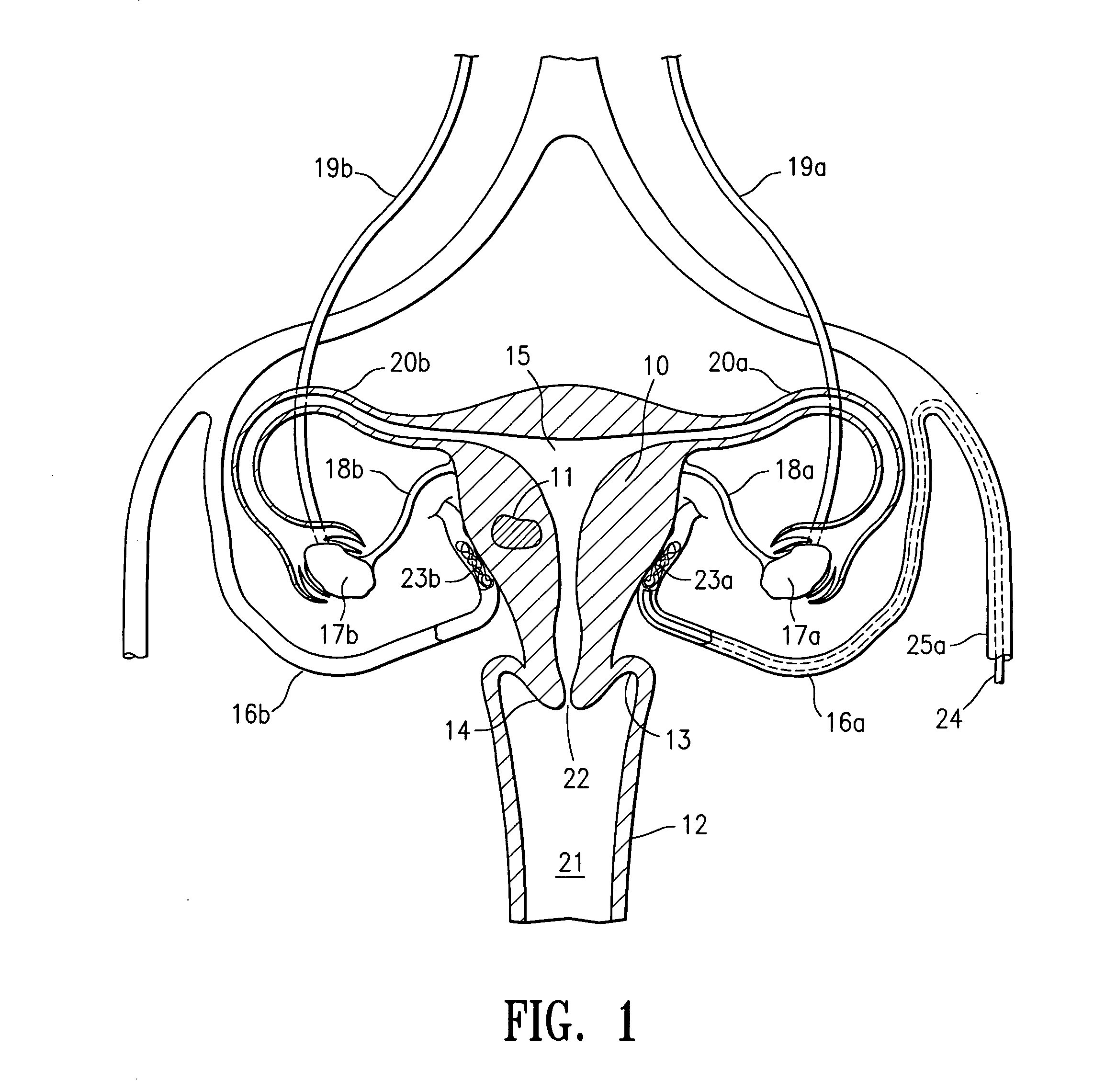Embolic occlusion of uterine arteries
a uterine artery and embolic technology, applied in the field of uterine disorders, can solve the problems of increased cardiovascular disease risk, reduced libido, increased etc., to slow or stop blood flow, accelerate lysis, and slow blood flow through the uterine arteries
- Summary
- Abstract
- Description
- Claims
- Application Information
AI Technical Summary
Benefits of technology
Problems solved by technology
Method used
Image
Examples
Embodiment Construction
[0025] The treatments embodying features of the present invention for short term, non-permanent uterine artery occlusion are directed to the following events. Blood flow in the uterine artery is slowed or stopped by occluding the artery by delivery of one or more short lived embolic masses of bioabsorbable material to desired locations within the patient's uterine artery system. This stoppage of blood flow creates a clotting cascade within the artery in a fashion well known to those skilled in the art. Once blood flow has ceased, or has otherwise slowed sufficiently, within the uterine artery clotting or thrombus formation begins and very soon the blood vessel is filled with blood clots or thrombus. The uterine fibroids, and more particularly the cells of the uterine fibroids, suffer a near immediate death because of the cessation of blood flow to them. The uterus on the other hand becomes anoxic, but because the uterus is partially supplied by the ovarian arteries and other collate...
PUM
| Property | Measurement | Unit |
|---|---|---|
| Length | aaaaa | aaaaa |
| Length | aaaaa | aaaaa |
| Length | aaaaa | aaaaa |
Abstract
Description
Claims
Application Information
 Login to View More
Login to View More - R&D
- Intellectual Property
- Life Sciences
- Materials
- Tech Scout
- Unparalleled Data Quality
- Higher Quality Content
- 60% Fewer Hallucinations
Browse by: Latest US Patents, China's latest patents, Technical Efficacy Thesaurus, Application Domain, Technology Topic, Popular Technical Reports.
© 2025 PatSnap. All rights reserved.Legal|Privacy policy|Modern Slavery Act Transparency Statement|Sitemap|About US| Contact US: help@patsnap.com

